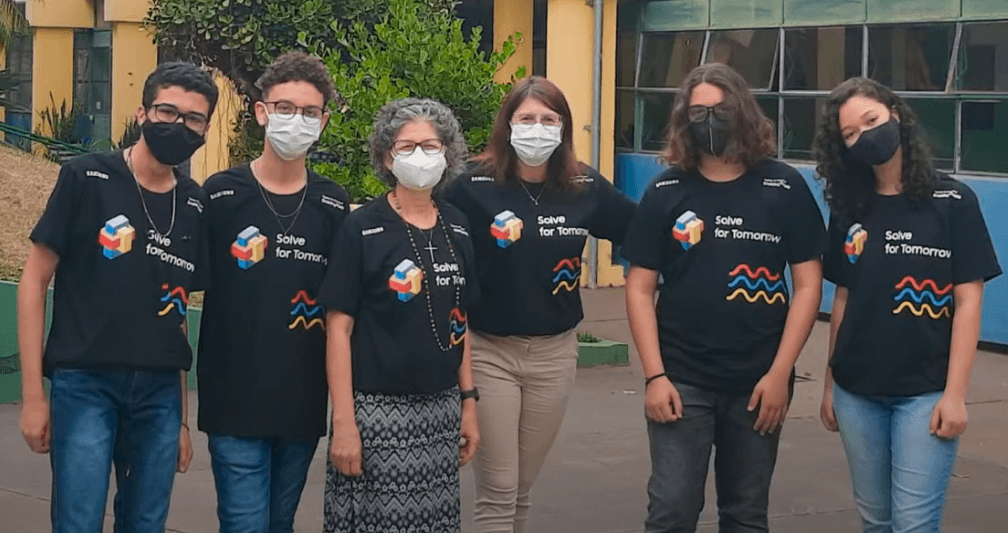“You have to believe that it is possible.” This is the mantra that Bárbara Rodrigues, a chemistry teacher at Escola Estadual Professor Sebastião de Oliveira Rocha, in São Carlos (SP), repeats to herself.
“You have to believe that it is possible.”
She believes that the transformation of education lies in encouraging students to think critically and have the space and conditions to build their own responses to local problems. “The science curriculum needs to be lived in practice, answering questions they identify in everyday life,” she explains.

Mediating a Youth Science Club called Tecnologia Escolar Sustentável Ligada ao Arduíno (Sustainable School Technology Connected to the Arduino – TESLA), and with the support of the biology teacher Isabel Cristina Santana Kakuda, Bárbara encouraged a group of ten students to build an anaerobic digester at school. Inspired by another school project, which calculated the waste in school lunches, the young people and the teacher decided to advance the discussion about food leftovers and its effects on the environment. Even having managed to significantly reduce the rates of food disposal, there were still leftovers that could be reused and transformed. “Together, we studied several alternatives for reuse and arrived at the proposal to build a biodigester”, explains Bárbara.
For the construction of the equipment, it was necessary to study concepts of chemistry and biology linked to the decomposition of organic matter and to research conceptual and technical paths to respond to the identified demand. For this purpose the teacher presented a set of academic and didactic references to the class, inviting them to draw their hypotheses. In a dynamic that included meeting moments, individual and collective study of the class, Bárbara drew up a research and experimentation plan with the young people until arriving at the construction of the prototype.
Collaborative work: the importance of listening and respect in the collective construction of projects
Impacted by the Covid-19 pandemic, the meetings were initially online but based on the student’s needs, they were able to use the school’s laboratory for research and empirical tests. “These meeting moments were fundamental not only for the development of the project but also for strengthening our unity as a group”, emphasizing the importance of building affective bonds in the teaching and learning process.
The construction of the prototype required a lot of creativity from those involved and constant problem-solving. According to the teacher, replicating something with easily accessible materials at school is not trivial: it was necessary to study and test several alternatives to make the equipment work — from the position where the container [gallon] should be, to the correct sealing of the construction seams. “Many times we almost gave up, but the bond we had and the shared desire we shared to achieve what we wanted, made us reach the result”, she identifies.
Therefore, according to the teacher, the diversity of the group is fundamental and requires the teacher’s attention to the socio-emotional skills of young people, understanding that collaboration between different profiles is necessary for the accomplishment of the work. For her a successful team brings together and stimulates each student profile (the dreamer, the systematizer, the resilient, the maker, etc.) in a process in which everyone has a role and learns to work together, in collaboration. “In the same way, my work with my teaching partner was fundamental. We have different and complementary profiles. I am very anxious; I need to solve everything on time. And Isabel organizes, establishes the steps to get where we want”, she justifies.




